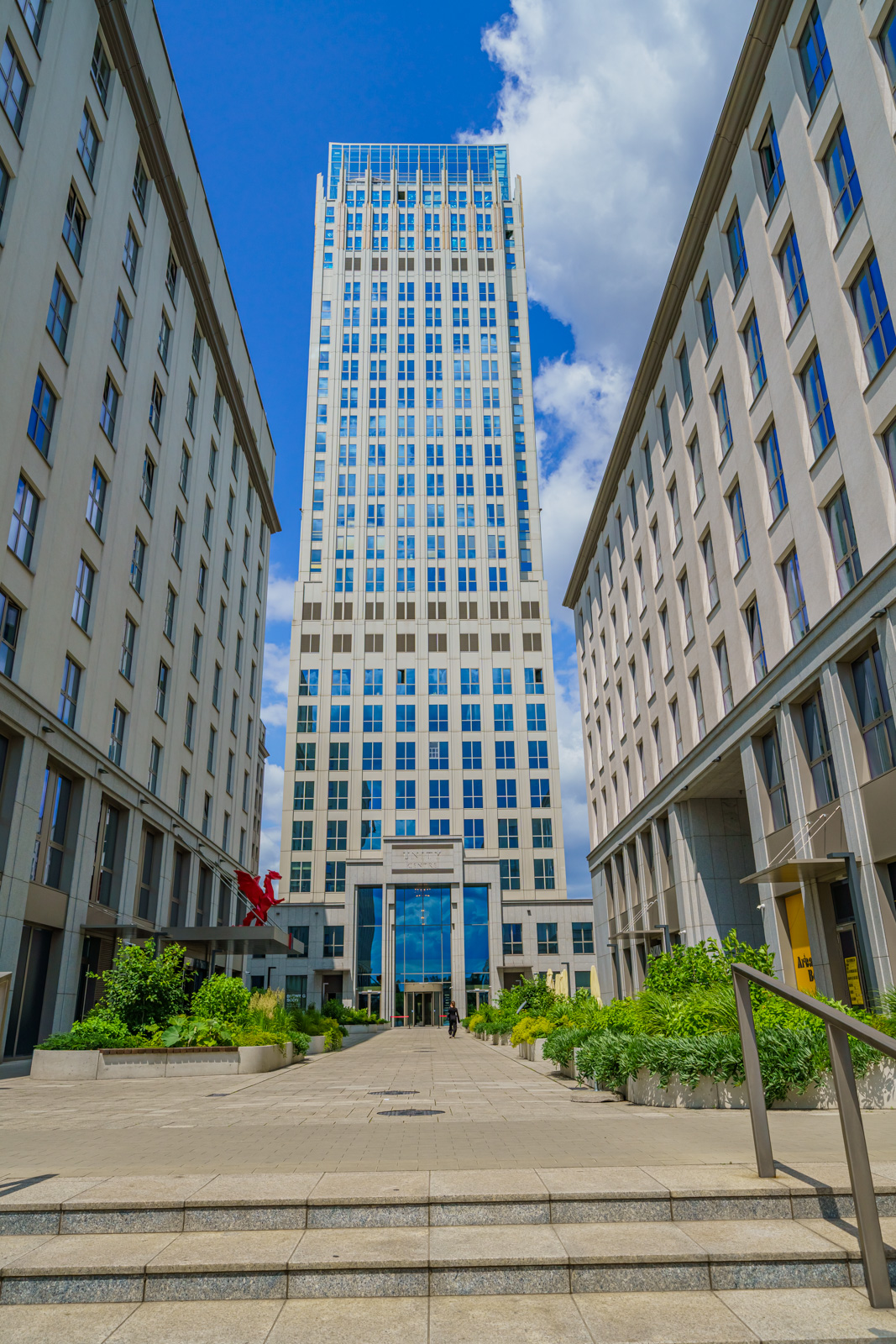When it comes to the office of the future, Polish office tenants primarily expect comfort and relaxation areas in the workplace. That is the finding of a recent study conducted by Union Investment in association with the Keralla Research Institute. The survey covered a representative sample of 150 office tenants across Poland’s seven largest office locations. 78 percent of the tenants cited generously proportioned space as their number one requirement for a modern office property. This space can be configured as an open layout, with different zones for working and relaxing, for example, or divided into separate offices for three to four people each. Either way, there is little enthusiasm in Poland for anonymous open-plan offices that focus solely on cramming in as many workstations as possible, while ignoring user comfort.
Relaxation areas boost comfort levels
In line with the desire for a spacious interior layout, two thirds of the tenants surveyed said that they also expected modern office buildings to have relaxation areas. These include quiet areas with comfortable seating, fitness areas and restaurant or café facilities, for instance. Technology such as air conditioning and ventilation systems is also considered essential for a comfortable office, along with elevated ceiling heights for a sense of space, according to 80 percent of the survey respondents. A high level of natural light in the offices is also cited as important by 73.5 percent of the tenants.
“The results of this study confirm that we are right to focus on making user comfort a priority for tenants in our existing portfolio,” said Christian Jansen, Tenant Relationship Manager Poland at Union Investment Real Estate GmbH. “At a time of tougher competition for tenants, these results are also an incentive for the entire real estate industry to think about ways of further increasing the feel-good factor for tenants without neglecting economic aspects. The impetus for innovation in the office segment is now coming from the younger generation of employees in particular, who have clear ideas about modern office spaces, and whose skills and abilities are highly sought after by employers.”
Focusing on the requirements of the younger generation
Around two thirds of companies are finding that younger employees now entering the workforce have different requirements when it comes to offices compared to their predecessors, and these are being taken into account when choosing a location. This experience is especially common in larger companies with more than 250 employees. For the younger generation, easy accessibility (83.5 percent), relaxation areas (69 percent) and on-site cycling facilities (62 percent) all rank very highly. In addition, 40 percent of the companies questioned believe that mobile apps related to the office are highly relevant for young employees. 35 percent report that young employees very much welcome events held at the office, such as inspirational talks by experts from other companies or sectors. The results demonstrate the extent to which the trend towards incorporating more amenities in an office property is being driven by the younger generation.
Sustainable use and good accessibility
The desire for comfort and convenience is typically accompanied by the expectation that properties should be used in a sustainable way. For 63.3 percent of the tenants surveyed, it is important for the office of the future to be easily commutable by bike and for cycling facilities to be provided on site. This finding corresponds with tenants’ general requirement that their office should be within quick and easy reach, which 62.7 percent regard as important. Interestingly, not all tenants believe that a property needs to be centrally located for it to be easily accessible. Only 40 percent of those questioned said they prefer the office to be located in the city centre. Around 30 percent actually favour a location on the outskirts, while 14 percent regard the location of the office as irrelevant as long as it has good transport links.
Warsaw and Krakow offer the best office space
From the point of view of the tenants surveyed, the office markets in Warsaw and Krakow offer the best opportunities for working in a future-ready office. Some 57 per cent of respondents state that their expectations are being met in Warsaw to a high degree. For Krakow, the figure is around 53 percent. Gdansk and Lodz come next, at 49 per cent each. Lower down the ranking are Poznan and Wroclaw, at 46 per cent and 40 per cent respectively. However, on the whole, all seven office locations perform well in the survey. It is apparent that there is a strong focus on the Warsaw office market. Here, only nine per cent state that not all of their expectations are being met. By contrast, in Gdansk, Poznan and Wroclaw the equivalent figure is around 35 percent. Viewed positively, this means that even in the lower ranking locations roughly two thirds of office users are at least satisfied with what the market has to offer.
“From an investor perspective, it’s encouraging to see that the offerings in all seven of the office markets surveyed in Poland are rated as good,” said Adam Irányi, head of Investment Management Europe II at Union Investment Real Estate GmbH. “For office properties that fail to fully meet tenant requirements, there is also the opportunity in some circumstances to add value through active asset management post-acquisition.”






